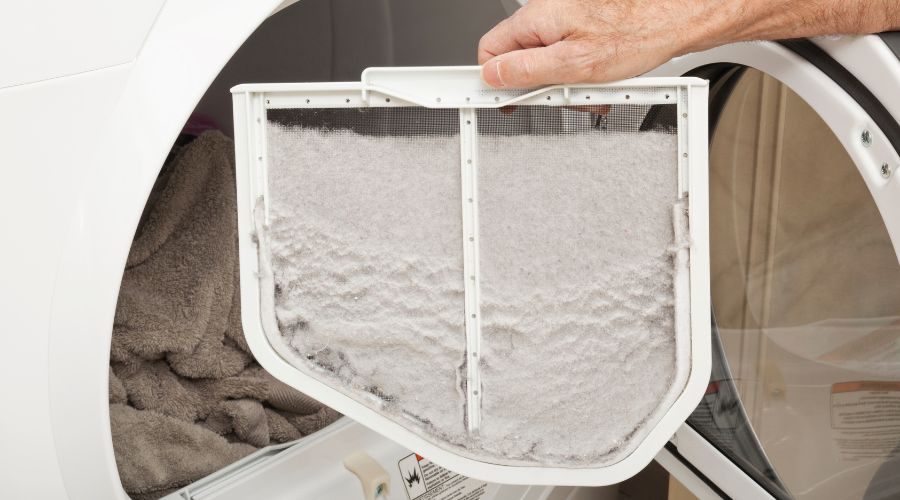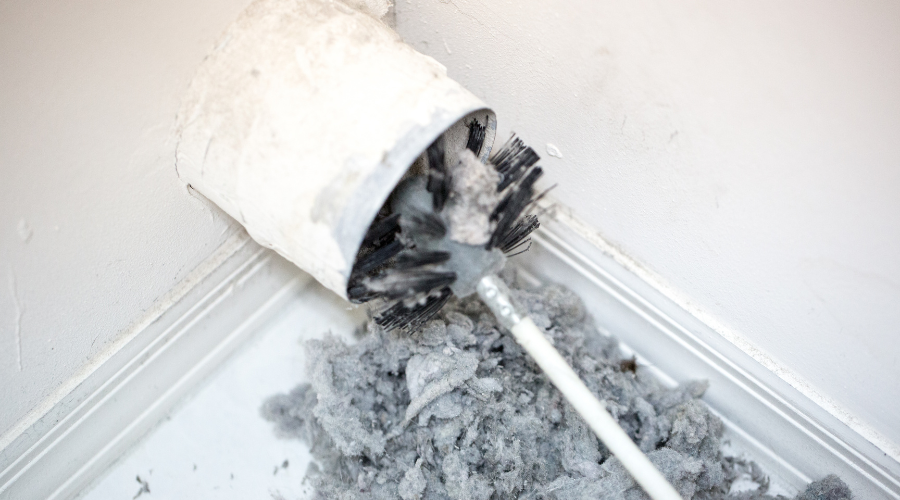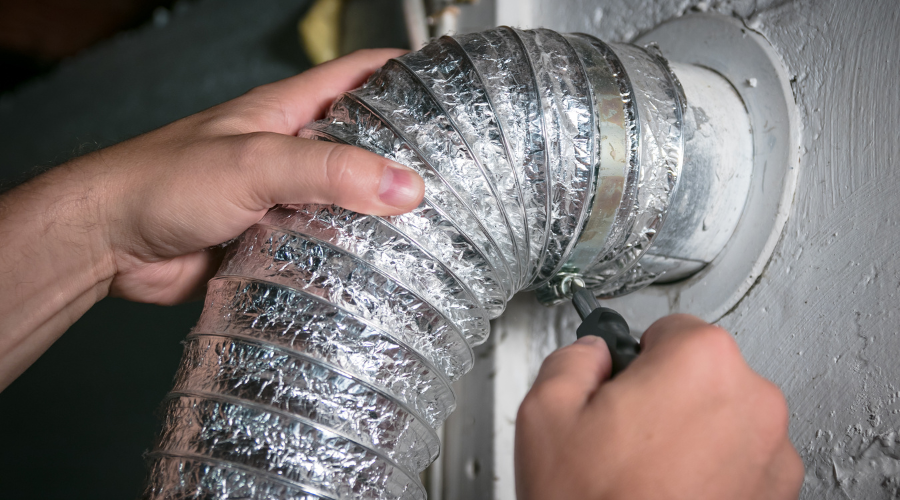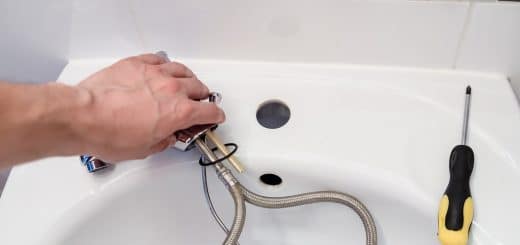Can a Dryer Leak Water?
Summary: Dryers may leak water due to issues with ventilationVentilation is the process of exchanging or circulating air ... More. Check for blockages, ensure proper insulationInsulation is a material used in buildings to reduce the tra... More, fix any holes, and inspect the vent trap. Condenser dryers and indoor vent exhausts also require attention for leaks. Optimal duct configuration is crucial for preventing condensation.

Dryer Leaking Water
Dryers make it easy and convenient for us to dry our clothes at home. However, they can occasionally leak water. When this happens, you can end up with water around your dryer on your laundry floor that can damage the flooring and electrical make-up of the dryer. If you notice that your dryer leaks water, you should stop using it and get it fixed.
Usually, dryer leaks are caused by condensation from an issue with the ventilationVentilation is the process of exchanging or circulating air ... More exhaust. Here are some common reasons you may be having issues with your dryer’s ventilationVentilation is the process of exchanging or circulating air ... More and how to fix them. If you have a condenser dryer, it is important to check the condensate pump which may solve this problem.
Blockage of the Ventilation
If you’ve noticed that your dryer is leaking water, it may be due to blocked ventilationVentilation is the process of exchanging or circulating air ... More. Dryers function by heating air and then spreading it around the drum so the clothes can be dried. However, if the dryer is not venting the warm air, it will condense and collect in the dryer. First, check the ventilationVentilation is the process of exchanging or circulating air ... More hose which comes out of your dryer to make sure that it does not have any kinks that are blocking the airflow. If your dryer has a lint screen that is attached to the ventilationVentilation is the process of exchanging or circulating air ... More hose, check it for lint blockages. This is usually caused by lint and fabric in the ventilationVentilation is the process of exchanging or circulating air ... More, and when it connects with wet air, it causes clumps. If you can, check the outside vent for any blockages. Just hold your hand up to the vent to see if there is airflow. As a rule of thumb, make sure to get your ventilationVentilation is the process of exchanging or circulating air ... More system cleaned at least once a year so that blockages can be avoided.
You can also disconnect the ventilationVentilation is the process of exchanging or circulating air ... More hose from the dryer and clean it, which can solve this issue. A dryer vent cleaning kit can be purchased from most hardware stores, or you can purchase a vacuum extension. Another thing to try is removing the panel where the ventilationVentilation is the process of exchanging or circulating air ... More hose goes into the dryer. Before you remove this panel, you need to shut off the power to the dryer. Once the exhaust hose has been reconnected, make sure that there are no twists or bends that can prevent airflow.

Insulation of the Vent Duct
If your dryer is leaking, that may mean that you have condensation or ice forming because there is not enough insulationInsulation is a material used in buildings to reduce the tra... More around the dryer exhaust duct. Usually, this happens in colder climates when the warm air coming out of the dryer is affected by the cold from the outside. This can also happen if your ventilation duct does not have the proper ventilationVentilation is the process of exchanging or circulating air ... More while it runs through a cold area such as the basement. To prevent condensation or ice from forming, you should have your dryer exhaust duct properly insulated.
Holes in Your Ventilation Duct
If your ventilationVentilation is the process of exchanging or circulating air ... More duct has cracks or holes, it may cause water to leak. This happens because condensation comes through the pipe that is damaged and ends up in the dryer. If you notice a hole in your duct, you need to replace it right away. If the hole is very small, you can always try patching it with specialized heavy-duty cooling and heating tape to fix it.
Defective Vent Trap
Generally, dryers have a vent flap at the exit of the dryer’s ventilation duct to stop the elements such as rain, snow, and leaves from going into the ventilationVentilation is the process of exchanging or circulating air ... More. The flapper will open when the air needs to go out but should stay closed otherwise. If there is an issue with the flap, it can let rain, ice, or snow into the ventilationVentilation is the process of exchanging or circulating air ... More pipe and cause water to get into the dryer. If you notice that the vent is not opening, it could be blocked which can also cause condensation inside the pipe. If you can get to the vent from the outside, check that it opens and is not blocked.
Condenser Dryer
If you are unable to connect a dryer to an external duct, a condenser dryer is a good alternative. They do not use an exhaust fan, instead they get rid of moisture from the warm air and collect it in a tank. If you notice that your condenser dryer is leaking, there may be an issue with the condenser system. First, check if the condenser tank is empty or if it is leaking. Next, check the condensate pump and hoses to see if there is any damage. Before you remove the pump, always make sure to disconnect the dryer from the power. If you think the pump is faulty and it’s causing water leakage, check the pump for continuity and replace it if needed.
Vent Exhaust Indoors
If your dryer ventilationVentilation is the process of exchanging or circulating air ... More is indoors such as in a garage, you may end up with moisture issues from condensation. Always make sure to first check the exhaust vent and see if it is causing condensation and consider moving it to a location outside.
Configuration of the Ventilation Duct
If you would like to prevent condensation in your ventilation duct, you must check its configuration and make sure it is horizontal and straight. If you have too many bends in the duct, lint will easily cause blockages. You could also have issues if you are using ribbed or plastic ducting. It is always best to use a ridged metal duct, galvanized steel, or aluminum.

How to Respond to Dryer Leaks
If your dryer is leaking, here are a few quick tips to help you figure out what may be causing it so that you can resolve this issue quickly yourself. If you are unable to do these steps yourself, make sure to reach out to professionals.
- Level your dryer:
If your dryer is not fully leveled or tilted forward, you may be releasing water during the dryingDrying is the process of removing moisture from materials, s... More process which can cause leakage. Make sure to check if the dryer is level with a spirit level. If it is not leveled properly, use the adjustable legs to adjust it until the spirit level is in the middle.
- Clean the lint trap:
The lint trap collects all the dust during the dryingDrying is the process of removing moisture from materials, s... More process. You will need to ensure that your lint trap is not clogged as it can cause the clothing to not dry properly which can also cause leaks.
- Clean the condenser:
If your condenser is clogged it can cause leakage at the bottom of the dryer. Just remove the condenser and rinse it. You can also clean the grid of the condenser with the brush of your vacuum. Make sure to always check the manual of your dryer before cleaning it.
- Clean the drain hose:
Is your dryer connected to the water drain? The drain hose automatically drains the moisture from your clothes. This hose can get clogged, or it can even tear. In that case, it can result in a leak or water buildup in the drum. Check if there’s a bend or blockage in the hose and clean it. Also check if the drain hose is attached properly. If there’s a leak at the back, it’s often because the drain hose isn’t attached properly.
- Empty the water reservoir:
Usually with a condenser and heat pipe dryer, the moisture will end up in the condensation reservoir. Once the reservoir is full, you must empty it so you can avoid overflow. Also, make sure to check for cracks in the water reservoir. Just fill it with water and check if any water comes out. If it does have leaks, you will need to replace it.

Is your dryer leaking water? Water damage restoration professionals can help! They will find the cause of the leak and remediate any water damage caused by the leak. Highly trained technicians will also remove any standing water, dry, and finally restore any damaged areas.












